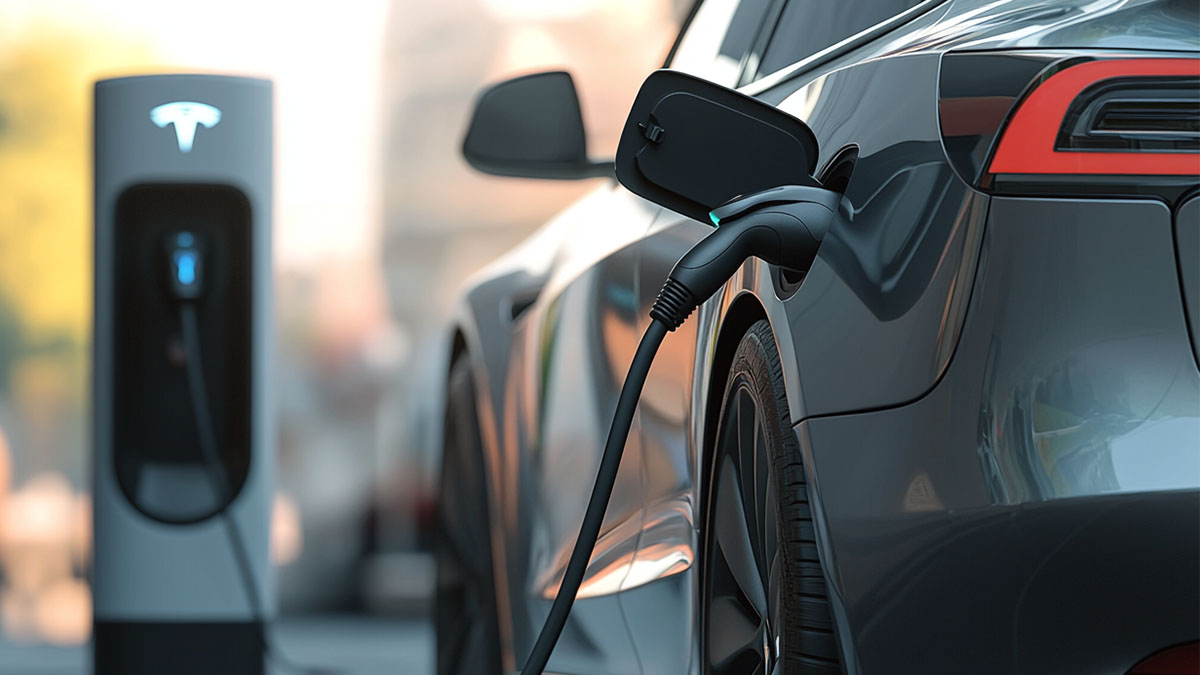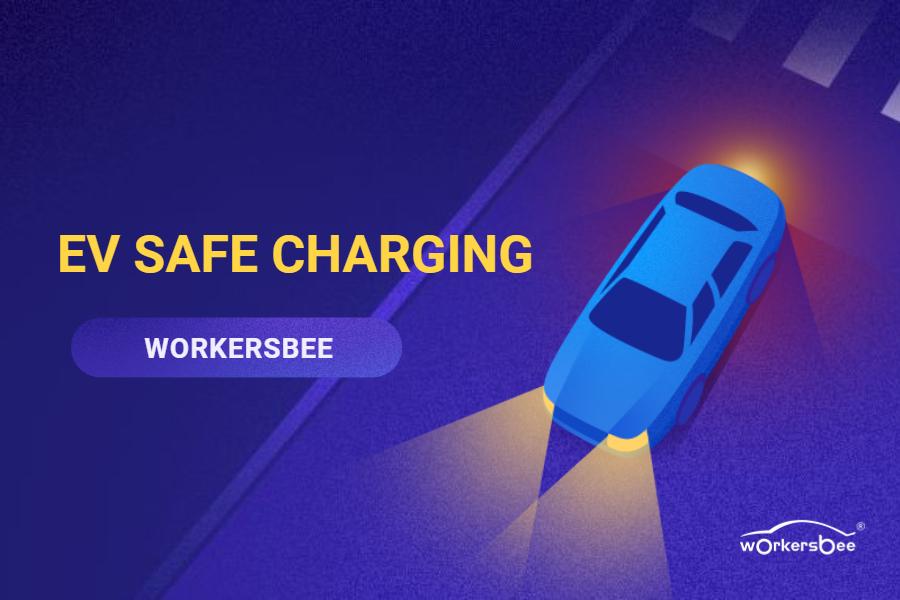 Challenges of Urban Electric Vehicle DC Charging
Challenges of Urban Electric Vehicle DC Charging
Jun 21, 2023
The International Energy Agency (IEA) published the report The Global EV Outlook 2023 in April, and from the global vehicle trading data presented in the report for the first quarter of this year, EV sales reached another record high, up about 25% over the same period last year. Stimulated by various policies and incentives, trading data from countries have shown strong EV growth, but we still seem to have a long way to achieve our decarbonization goals. In other words, the present market share of EVs is nowhere near what is expected for the global achievement of Carbon Reduction targets. Electric Vehicle anxiety makes many ICE drivers hesitant to choose EVs and is a major barrier to further EV popularity. In essence, EV anxiety is not range anxiety as we usually think, but more about the fear of being unable to recharge efficiently after a power shortage. With the explosive growth of the electric vehicle market, the EV charging infrastructure is being pushed to its limits. This means that EV plug is always available to plug in power whenever you need it. Besides promoting the application of home AC chargers, it is imperative to leverage the power of government and utilities to vigorously increase the percentage of public DC charging piles in urban that can replenish energy quickly and efficiently. However, building DC fast charging stations in urban is not an easy task and usually faces several challenges.
The Right Space
Although the DC charging time for EVs is getting closer to the refueling time for gasoline vehicles, it is challenging to find the right DC charging space in cities. The planning and layout of charging facilities should consider the needs and behaviors of diverse user groups, particularly in densely populated residential areas and high-value commercial zones. The location selection should consider various factors, including urban public planning, drivers' charging habits, demand frequency, fair access to charging for residents on each street, etc. Whether it is for daily urban life recharge or to facilitate road trips, DC fast charging points are bound to have large enough parking spaces and charging spaces. This would probably involve such things as gas stations, parking lots, apartments, residential and commercial buildings, etc. It should not be overlooked that the prerequisite to start implementing construction is the ability to obtain land and building permits.
Grid Strength Support
Electric vehicle charging must be connected to the grid. Compared to low-power home AC chargers, DC fast charging requires a much larger amount of power supply, which may put considerable pressure on the regional grid. First, sufficient energy supply generation must be secured to enable the high output voltage requirements of DC charging posts. Especially in the summer peak, ensuring sufficient power supply and balancing the energy demand of the city is a key issue. In addition, the grid needs to be reliable enough to handle increasing loads, while being resilient enough to withstand bad weather and other potential threats.
Driver Experience Satisfaction
As the ultimate user of the charger, the EV driver has an absolute say in the charging experience. DC charging can provide higher power and faster charging speed to the car, gaining significant mileage increase in a short time. This requires chargers to have higher power to ensure they can meet the huge charging demand created by the growing number of EVs. The EVSE must improve its reliability and extend its uptime. To avoid the difficulty of finding available charging piles nearby when EVs run out of battery.
The consistency of the vehicle-pile interface protocol is the key to ensuring convenient charging for drivers. Workersbee's charging cable is highly compatible with a wide range of charging standards and has obtained many international authoritative certifications such as UL, TUV, CE, and RoHS. The flexible TPU cable is designed with excellent workmanship, and the connector is easy to plug and unplug without effort. The superior ergonomic design makes it easy to handle and comfortable for the driver to grip during the charging connection preparation stage.
The interactive experience of the device is also the part that drivers will concern. The interface of the charger side is clear, friendly, and easy to understand and operate, and the supporting APP of smart devices such as mobile phones can precisely position the location of the charger and be easy to operate, etc. In the payment part of the completed charging, the billing standard should be clear and transparent, in line with market fairness. It is also necessary that the payment operation is convenient and safe, whether through the device side or the APP side.
Perhaps the surrounding environment and supporting facilities of the charging station also have to be taken into consideration, such as convenience stores, cafes, or restaurants. Certainly, the parking fees incurred in the charging process need to be charged reasonably.
Operation and Maintenance
The high equipment procurement cost and increasingly high-frequency usage rate of DC chargers make the operation and maintenance cost the biggest concern, and the O&M work will be pushed to the front line. The management platform can monitor the operation of each device point remotely, and identify the chargers that are broken down in time, with after-sales support from technicians.
Frequent plugging and unplugging of the charging cable will inevitably cause wear or damage to the terminals inside the gun, which leads to a poor electric connection, affecting the charging speed or even a charging failure. It is also easy to overheat and damage components, significantly shortening the life of the device, and even a serious safety risk. Workersbee's terminal quick-change technology makes DC charging maintenance easier and lower cost. The terminals only need to be replaced individually when they are worn, not the whole plug and the modular operation process is very simple.
Charging Security
Safety is a well-deserved topic for electrification applications in urban. The safety of the device, the car, the driver, the installer, and the technical service provider are all intertwined. Equipment needs to meet relevant quality standards and safety codes, including fire and flame retardants, leakage protection, temperature monitoring, overload protection, etc. It can automatically respond to the battery management system of electric vehicles, interact and communicate to ensure the security and efficiency of the charging process. Moreover, special consideration should be given to the potential for accidents occurring under user error operations. Conduct adequate communication tests and electrical safety tests before putting them into use, and equip them with suitable insurance according to the actual situation.
The demand for EVSE in cities is growing exponentially as the number of electric vehicles on the road continues to rise. Developing sustainable business models and ensuring that revenues from charging facilities cover operating costs are the challenges we face if we are to achieve our goal of a decarbonized society. These challenges need to be resolved by governments, urban planners, energy suppliers, and stakeholders working together to drive the development and uptake of EV and EV charging facilities in cities. Stay Charged, Stay Connected. Workersbee is focused on the future of green transportation and is deeply committed to the EV charging market with superior quality, cutting-edge technology, complete certification, and a robust after-sales system. Contact us to learn how we can help you better deploy DC charging in your city.
Read More

 Understanding NACS vs CCS: Key Differences and the Future of EV Charging Standards
Understanding NACS vs CCS: Key Differences and the Future of EV Charging Standards
 Challenges of Urban Electric Vehicle DC Charging
Challenges of Urban Electric Vehicle DC Charging
 0 after sale worry Terminal Quick-Change DC ev charging plug
0 after sale worry Terminal Quick-Change DC ev charging plug